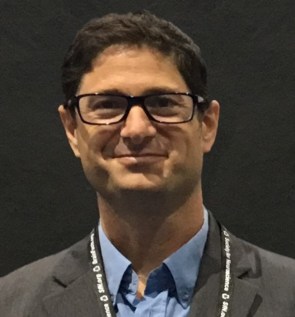
Researchers from California have used a rapid fabrication technique to produce tissue scaffolds that mimic the 3D architecture and mechanical properties of spinal cord tissue. These scaffolds can be used to enable nerve regeneration after acute spinal cord injury (Nature Medicine 10.1038/s41591-018-0296-z).
Spinal cord injury affects hundreds of thousands of people worldwide, with no treatment currently available. Healing is hindered by the lack of nerve regeneration in the injured spinal cord due to factors such as inflammation and glial scarring. Fabrication techniques such as 3D printing provide a means to generate scaffolds that can support and guide nerve regeneration, with the aim of regaining motor function. These scaffolds can be designed and produced to match the size and shape of the injury site.

For the first time, researchers from the UC San Diego School of Medicine and its Institute of Engineering in Medicine have produced a biomimetic spinal cord scaffold utilizing microscale continuous projection printing. This technique allowed precise production of the injury scaffold, in as little as 1.6 s.
Key to the scaffold production was biomimicry — mimicking the natural structure and mechanical characteristics of spinal cord. The researchers produced a scaffold with microscale channels that facilitate axonal regeneration and guide the axons to stay in the same functional tracts as they bridge the injury site. The biocompatible scaffold itself was produced from a sturdy but cell-friendly hydrogel composed of polyethylene glycol–gelatin methacrylate (PEG-GelMA). This gel material supports cell viability and growth, while closely mimicking the mechanical properties of spinal cord tissue.
The researchers used rats with spinal cord injury to test their 3D printed scaffolds. In a biocompatibility experiment, they implanted rats with either the novel scaffold, a simple agarose scaffold or no scaffold at all. The PEG-GelMA scaffolds induced a reduction in immune response from the host, as well as promoting neural regeneration and axonal guidance into the scaffold, compared with the control groups.
The team then loaded neural progenitor cells (NPCs) into the scaffold, facilitating the formation of neuronal relays between the host axonal tracts (above the injury) and NPCs inside the scaffold. In turn, the NPCs send axons outside the scaffold to connect with the intact spinal cord tissue below the injury.
NPCs have been considered for spinal cord repair previously, but implantation within the required time frame is difficult due to the hostile environment of a spinal cord injury. Importantly, the new scaffold not only guided axon regeneration but also protected the implanted NPCs from the inflammatory environment of the injury. Animals implanted with NPC-loaded scaffolds showed significant nerve regeneration and regain of motor function.
The researchers examined the animals six months after transplantation and saw significant physical improvement in the group implanted with scaffold and cells compared with the controls. The authors note that the organization of host regenerating axons and NPC-derived axons through the channels of the scaffold was linear and tightly bundled. Electrophysiological analysis also showed that rats implanted with NPC-loaded scaffolds showed improved connectivity that was lost upon re-transection above the implant site.
Spinal cord injuries often carry high morbidity and poor prognosis, owing to insufficient regeneration of nerves following injury. This new technology may provide a significant step towards improved treatment by creating an environment that can be tailored to specific injuries to foster natural nerve repair. The biomimetic structure, with implanted, supportive neural progenitor cells, attenuates inflammation and promotes nerve guidance and repair.
The research team is currently looking to conduct trials on larger animal models, and aims to take the technology into human trials soon.



